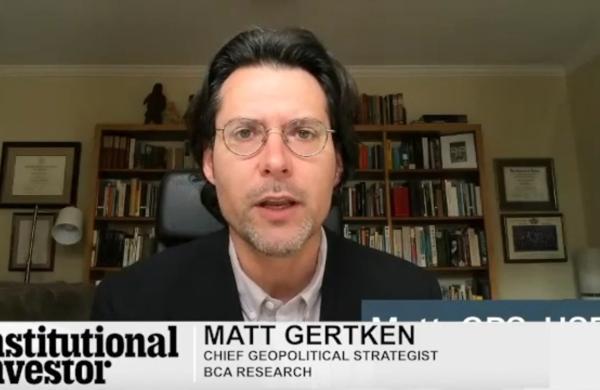For 10 years, Hong Kong has dominated the fast-growing offshore renminbi market. But as internationalization of the renminbi accelerates, it risks losing out to new competitors. Can Hong Kong keep the good times rolling?
And that could be just the beginning. Many bankers argue that as China’s economy continues to open, the range of yuan assets in which global funds can invest is likely to increase. Eventually, moves towards liberalizing the capital account will lead to full currency convertibility.
Yet as China watchers know only too well, predicting the pace of change on the Mainland is a thankless task. Until recently, the RMB’s climb against the US dollar appeared unstoppable. But during the first five months of this year, the RMB lost almost 3 percent of its value amid fears that slower economic growth combined with financial sector weakness could put the brakes on further removal of China’s strict capital controls. Now the currency is once again appreciating against the US dollar, following an improved outlook for the economy and expectations of a higher current account surplus.
Despite the increased volatility, many bankers believe that continued internationalization of the yuan is inevitable. John Zhu, economist for Greater China at HSBC, points out that China now has currency swap agreements with at least 20 central banks, including those in Japan, South Korea, Thailand, New Zealand, Argentina and Malaysia, as well as the European Central Bank. Furthermore, RMB deposits now account for around 12 percent of total deposits in the Hong Kong banking system, up from 1 percent in 2008.
“Slowly but steadily, the RMB is going global,” says Zhu. “The euro was seen as a prime candidate for those seeking alternatives to the dollar, or greater diversification, but it has unfortunately faced its own share of uncertainties arising from the Eurozone debt crisis. This has led to increasing interest across the world in holding non-traditional currencies in foreign exchange reserves. Many central banks and global investors are increasingly seeing the RMB as another alternative.”
Cornering the Market
The dominant player in the fast growing offshore RMB market is Hong Kong.
“It has been 10 years since the offshore
RMB business was launched here,” says Hong Kong financial secretary John Tsang. “Over the years, Hong Kong has developed into the world’s largest offshore RMB business hub, with the world’s largest offshore pool of RMB funds. As at the end of June 2014, RMB deposits and outstanding RMB certificates of deposit altogether exceeded RMB 1.1 trillion.”
Since 2009, the Mainland authorities have implemented various measures to expand the use of the RMB for trade settlement, direct investments and portfolio investments. On the back of these developments, the offshore RMB market in Hong Kong has grown significantly, with its breadth and depth ever increasing. “I believe that liberalization of the RMB will continue to benefit Hong Kong,” says Tsang. “The increasing use of the RMB in cross-border and offshore transactions will entrench Hong Kong’s role as the global hub for RMB trade settlement, financing, foreign exchange trading and asset management.”
In March 2013, the Renminbi Qualified Foreign Institutional Investors (RQFII) scheme was expanded, allowing more eligible financial institutions to apply for RQFII qualifications with relaxed investment restrictions. The first offshore RMB Bond Index ETF was listed on the Hong Kong Stock Exchange in June of the same year. There are currently 16 RMB-denominated RQFII ETFs and 43 unlisted RQFII funds. Meanwhile in April 2014, the exchange added RMB currency futures to after-hours trading. “We expect that more RMB-denominated investment products will be launched in the future,” says Tsang.
There are also high hopes for the continued development of the RMB bond market in Hong Kong, known as the dim-sum market. “Currently, any corporate or institution can issue RMB bonds in Hong Kong, and we are seeing a diversified range of issuers and investors coming from different parts of the world,” says Tsang. In April, the central government announced plans to issue RMB sovereign bonds totalling RMB28 billion in Hong Kong this year. That’s a sharp rise over the RMB23 billion issued last year. The RMB sovereign bonds will be issued twice annually, regularizing the issuance program. Taken together, issuance of dim-sum bonds reached more than RMB130 billion in the first six months of 2014, which already exceeded last year’s total. These developments, Tsang believes, have further enhanced the RMB bond market in Hong Kong.
Fierce Competition
One obvious sign of the growing internationalization of the RMB is the number of financial centers now offering yuan products.
In March 2014, Paris joined London as the second non-Greater China city to get an RQFII quota. Three months later, China Construction Bank’s London branch was appointed the official clearing bank for offshore RMB in London. Within a matter of days, the Bank of China’s Frankfurt branch became the first institution in the Eurozone allowed to clear payments in RMB. Western bankers expect the clearing bank agreements to pave the way for increasing numbers of RMB bond offerings by Chinese banks’ offshore branches.
“Hong Kong has the most-established and largest RMB corridor with Mainland China, but as other financial centers, such as London, Singapore and Frankfurt, establish the necessary infrastructure and agreements to support RMB transactions, we will see the RMB grow significantly in these markets,” says, Alain Raes, chief executive of Asia Pacific at SWIFT.
It is not only European financial centers that are attempting to grab a slice of the business. Back in 2012, Taiwan and China signed an agreement to set up an RMB clearing system to pave the way for local banks to engage in yuan-denominated transactions. As of July 2014, Taiwan’s RMB deposits reached RMB293 billion, according to Taiwan’s Central Bank. Meanwhile, Singapore also is carving out a niche as an RMB hub with the issue of RMB bonds known as Lion City bonds. In the future, it is likely that the Chinese authorities will authorize other offshore centres to conduct yuan transactions.
Some bankers believe that another threat to Hong Kong could come from the establishment of the Shanghai Free Trade Zone. Set up in August 2013, this special trade zone is being promoted as the next big testing ground for Chinese economic reforms.
Yet while Hong Kong is likely to face growing competition both from inside and outside China, Tsang says that he is not afraid of losing out to rivals. “When you look into our DNA, you will notice that Hong Kong always welcomes competition, especially when it involves initiatives that promote our nation’s economic development,” he says. “The expansion in the cross-border use and circulation of RMB funds will further promote the internationalization of RMB, which will in turn contribute to the development of the offshore RMB business in Hong Kong.”
Cross Border Links
One of the latest channels for the cross-border trade in RMB is the Shanghai-Hong Kong Stock Connect scheme.
Slated for launch in October, the scheme will allow Hong Kong and international investors to directly invest in yuan-denominated A-shares listed on the Shanghai Stock Exchange. At the same time, Mainland investors will be able to directly invest in H-shares listed on the Hong Kong Stock Exchange. The tie up is expected to further open China’s heavily restricted domestic markets while boosting Hong Kong’s status as a global financial centre.
In the initial stages at least, the program will involve constituent stocks of the Hang Seng Composite LargeCap Index and the Hang Seng Composite MidCap Index. The shares of all companies listed on both the Shanghai Stock Exchange and Hong Kong Stock Exchange will also be eligible for trading. Longer term, there is talk of the link being extended to include the Shenzhen Stock Exchange.
But what will be the impact of the exchange link on the cross-border flow of yuan? CLSA recently asked 401 mainland Chinese A-share investors about the scheme in to gauge their interest. Around 20 percent of them claimed they would be interested in investing in the Hong Kong market, due to its better regulatory environment compared with the A-share market. Others were put off by the high minimum account requirement of 500,000 yuan.
For CLSA, one of the big surprises was that many Chinese investors were not aware that yuan-denominated A-shares on the mainland trade on average at an 8 percent discount to their Hong Kong counterparts. This however may already be changing. Since the end of May, exchange traded funds tracking China’s A-shares have reported strong inflows, as investors bet that the valuation discounts on A-shares will significantly narrow.
In the future, the Chinese regulatory authorities are likely to take additional steps to boost two-way RMB fund flow. On the agenda could be the expansion of quotas to individuals and corporates to convert RMB into foreign currency as well as wider foreign investor access to the domestic capital markets. Longer term there is also a need for improved transparency, particularly in areas of monetary policy, tax treatment and foreign exchange.
Big Potential
Just how big the potential is for the RMB to become an international reserve currency is widely disputed. HSBC expects the RMB will be fully convertible over the next two to three years, thanks to continuing economic and financial reforms in China and the rapid growth of RMB-denominated offshore products. Some bankers, however, strike a more cautious note. Standard Chartered Bank argues that a further opening up of the country’s capital account together with a steady rise in the use of the RMB as an investment currency will be necessary to achieve greater liberalization of China’s financial markets. An added bonus could come from the International Monetary Fund’s recognition of the RMB as a potential reserve currency with Special Drawing Rights.
But even if bankers’ forecasts prove to be hopelessly optimistic, the sheer size of the Chinese economy and its role in international trade mean that the growing importance of the yuan is unlikely to go away. That should be good news for Hong Kong’s status as a global financial center as well as for the global banks such as HSBC, Standard Chartered Bank and Deutsche Bank, which are aggressively promoting the use of the RMB.
Tsang is optimistic that Hong Kong will continue to play an important role in the internationalization of the RMB. “Hong Kong, being the world’s freest economy, is often the first place to enjoy the fruits of any Central Government’s liberalization measures,” he says. “We are already the biggest investor in almost every province in the Mainland; we have the business network that is unmatched; we have deeper knowledge of the Mainland market than anyone else; and we have that first-mover advantage that has enabled us to build in anticipation the soft and hard infrastructure to sustain our role in the further economic development of the Mainland.”





